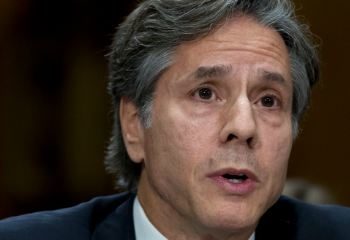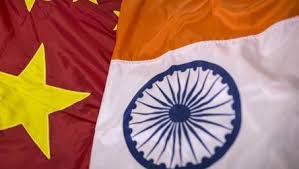World
Dinosaur tail discovered trapped in Myanmar amber
 Nay Pyi Taw: In one-of-a-kind discovery, a tail of a feathered dinosaur has been found perfectly preserved in amber in Myanmar, opening a new window on the biology of a group that dominated earth for more than 160 million years, a media reported on Friday. Described in the journal Current Biology, the examination of the specimen suggests the tail was chestnut brown on top and white on its underside. “This is the first time we’ve found dinosaur material preserved in amber,” co-author Ryan McKellar, of the Royal Saskatchewan Museum in Canada, told the BBC news.
Nay Pyi Taw: In one-of-a-kind discovery, a tail of a feathered dinosaur has been found perfectly preserved in amber in Myanmar, opening a new window on the biology of a group that dominated earth for more than 160 million years, a media reported on Friday. Described in the journal Current Biology, the examination of the specimen suggests the tail was chestnut brown on top and white on its underside. “This is the first time we’ve found dinosaur material preserved in amber,” co-author Ryan McKellar, of the Royal Saskatchewan Museum in Canada, told the BBC news.
The study’s first author, Lida Xing from the China University of Geosciences in Beijing, discovered the remarkable fossil at an amber market in Myitkina, Myanmar. The 99-million-year-old amber had already been polished for jewellery and the seller had thought it was plant material. On closer inspection, however, it turned out to be the tail of a feathered dinosaur about the size of a sparrow.
McKellar said examination of the tail’s anatomy showed it definitely belonged to a feathered dinosaur and not an ancient bird. He said there are signs the dinosaur still contained fluids when it was incorporated into the tree resin that eventually formed the amber. This indicates that it could even have become trapped in the sticky substance while it was still alive.Co-author Prof Mike Benton, from the University of Bristol, added: “It’s amazing to see all the details of a dinosaur tail – the bones, flesh, skin, and feathers – and to imagine how this little fellow got his tail caught in the resin, and then presumably died because he could not wrestle free.”
The findings also shed light on how feathers were arranged on these dinosaurs, because 3D features are often lost due to the compression that occurs when corpses become fossils in sedimentary rocks. The feathers lack the well-developed central shaft – a rachis – known from modern birds. Their structure suggests that the two finest tiers of branching in modern feathers, known as barbs and barbules, arose before the rachis formed.
Paul Barrett, from London’s Natural History Museum, called the specimen a “beautiful fossil”, describing it as a “really rare occurrence of vertebrate material in amber”.
He told BBC news: “Feathers have been recovered in amber before, so that aspect isn’t new, but what this new specimen shows is the 3D arrangement of feathers in a Mesozoic dinosaur/bird for the first time, as almost all of the other feathered dinosaur fossils and Mesozoic bird skeletons that we have are flattened and 2D only, which has obscured some important features of their anatomy.”
National
Foodman Vishal Singh Honored for Hunger Free World Mission in Bangkok

Lucknow: Vishal Singh, a renowned social worker from Lucknow, also known as Foodman, has once again made India proud. He was honored by the Happy Hands Gloves Cooperative Limited Company in Korathai, Thailand, for his work with the Hunger Free World Mission.
The Hunger Free World Mission’s meeting was held in Korathai, Thailand, under Vishal Singh’s leadership. Representatives from several countries, including Mr. Raja Dwivedi (Managing Director of Happy Hands Gloves Limited), Thailand Coordinator Mr. Raja Mishra, and member Mr. Varun Singh, attended the event.

Under Vishal Singh’s leadership, the attendees took a pledge to work together toward creating a hunger-free world.
Speaking on the occasion, Vishal Singh explained that the main goal of the Hunger Free World Mission is social participation. He said the mission is not just about feeding people but also about meeting other basic needs of those who are struggling. The mission focuses on helping families of terminally ill patients in hospitals by providing food and shelter. It also works to fulfill essential needs like education, jobs, and care for the elderly.
For the last 16 years, the Vijay Sri Foundation has been providing free services, benefiting thousands of people. Vishal Singh highlighted that the mission aims to gain global recognition like other organizations such as WHO, WWF, and Red Cross, which work for social causes.
During this meeting, Vishal Singh was appointed as the Chairman of the Hunger Free World Mission by representatives from various countries. They also discussed holding regular meetings in different countries to push the mission forward.
Business tycoon Dr. Abhishek Verma has also supported this humanitarian mission, vowing to promote the idea of “Seva Parmo Dharma” (Service is the highest duty) worldwide. Vishal Singh praised him, stating that people like Dr .Abhishek Verma inspire others to work for the betterment of society.
Recently, Romania’s Ambassador, Mr . Daniela Sezonov Ţane, invited Vishal Singh to the Romanian Embassy in Delhi, where they discussed the mission in detail. Impressed by his humanitarian work, she honored Vishal Singh and invited him to Romania to take the mission forward .
Food man Vishal Singh has been serving the people of India for the past 16 years. Through the Vijay Sri Foundation, he provides free meals to cancer patients & their families ,shelter, and education for women & children along with running free old-age homes in Lucknow.
In addition to his humanitarian work, Vishal Singh also addresses issues like crime and corruption through his role as Chairman of Seva Path Media and Managing Director of Vijay Sri Foundation.

During the COVID-19 pandemic, Vishal Singh and his team worked tirelessly to provide food and help to the needy, including starving children, elderly citizens, and pregnant women. Despite contracting the virus himself, he continued to assist others after his recovery. He even created a life-saving oxygen regulator using household items, which was praised by doctors both in India and abroad.
In his address at the meeting, Vishal Singh spoke about his mission to create a hunger-free world. He pointed out that India’s large population, along with issues like unemployment and poverty, has caused the country to fall on the Hunger Index. He urged people to contribute just one handful of grains daily to help create a hunger-free world.
He concluded by saying that through social participation, we can empower the people around us, meet their basic needs, and work together to build a stronger, more prosperous, and developed society.





















